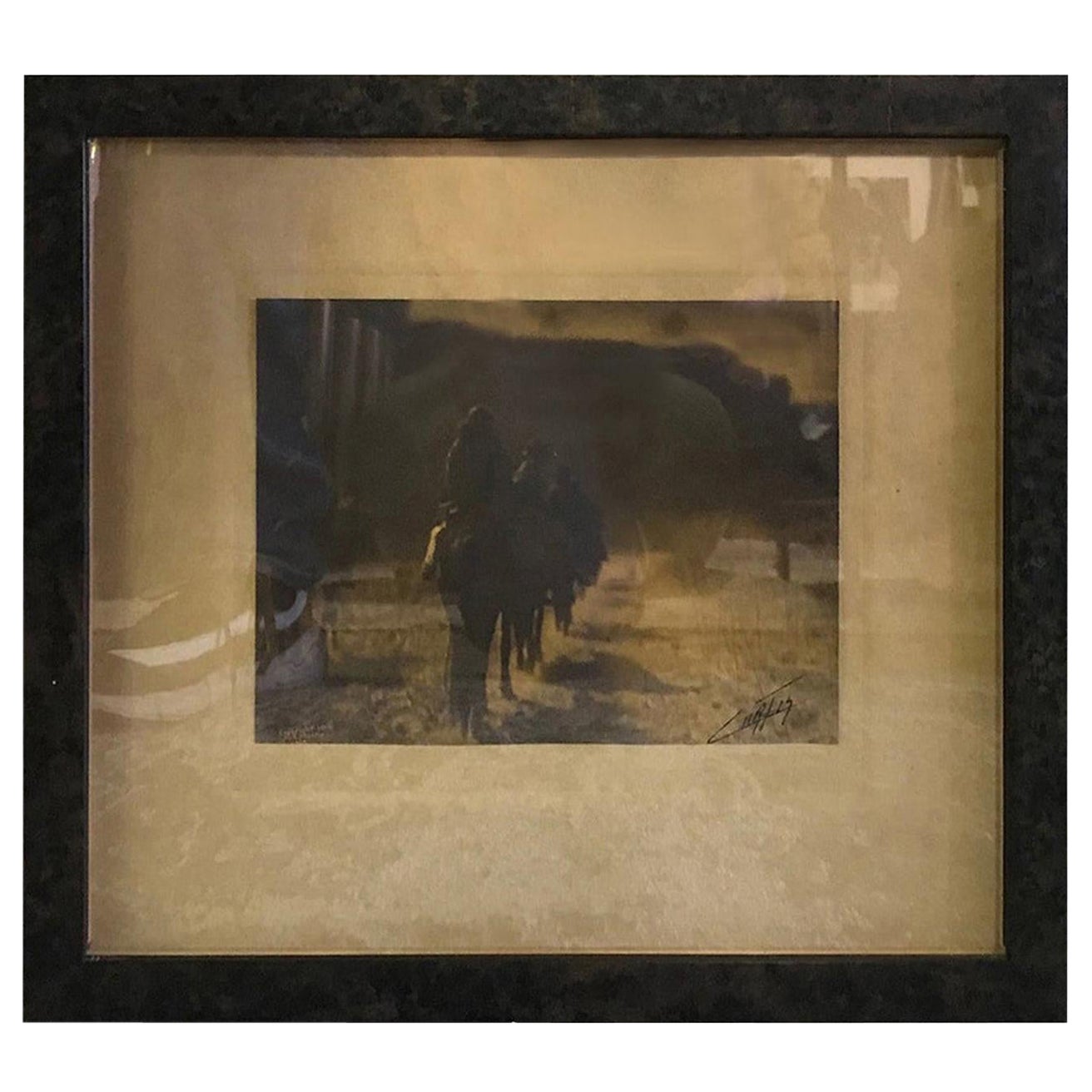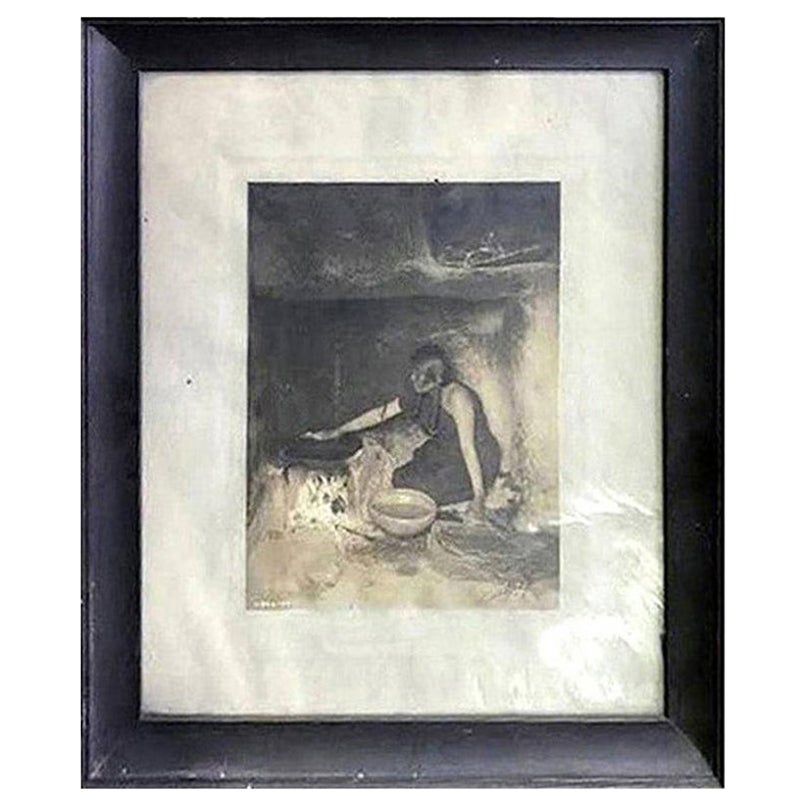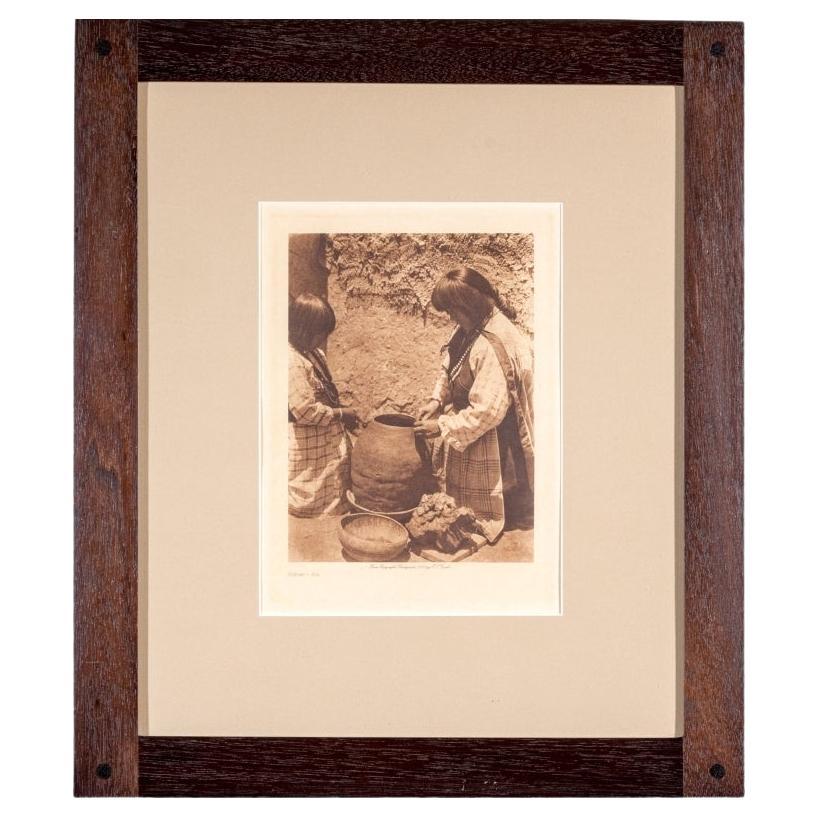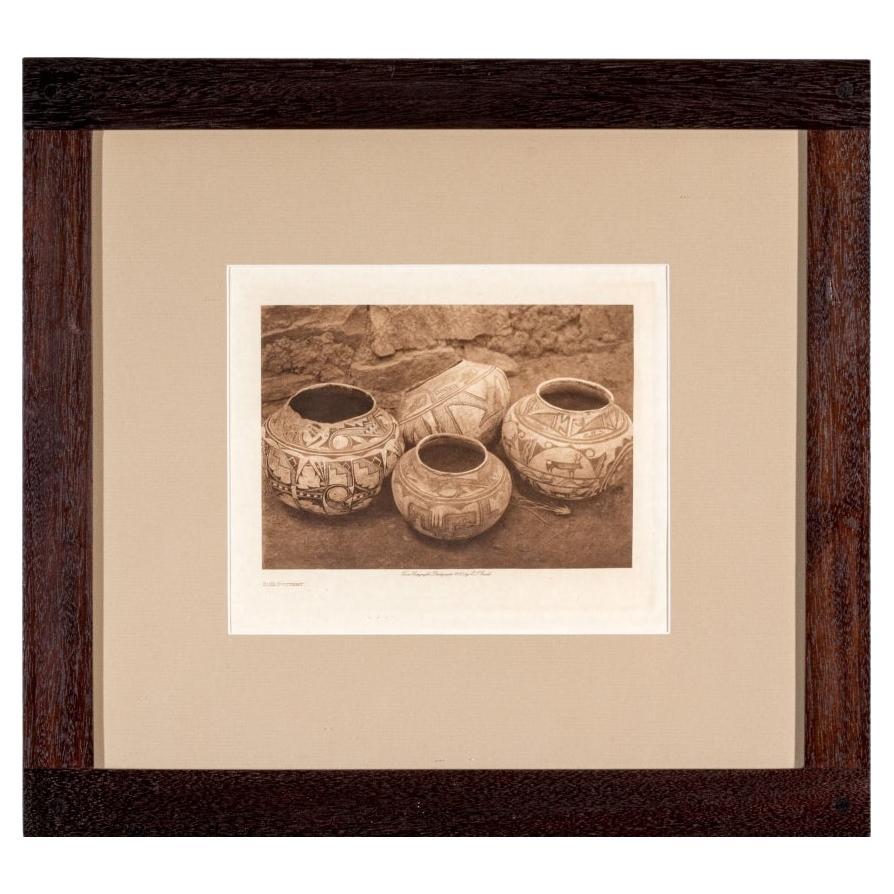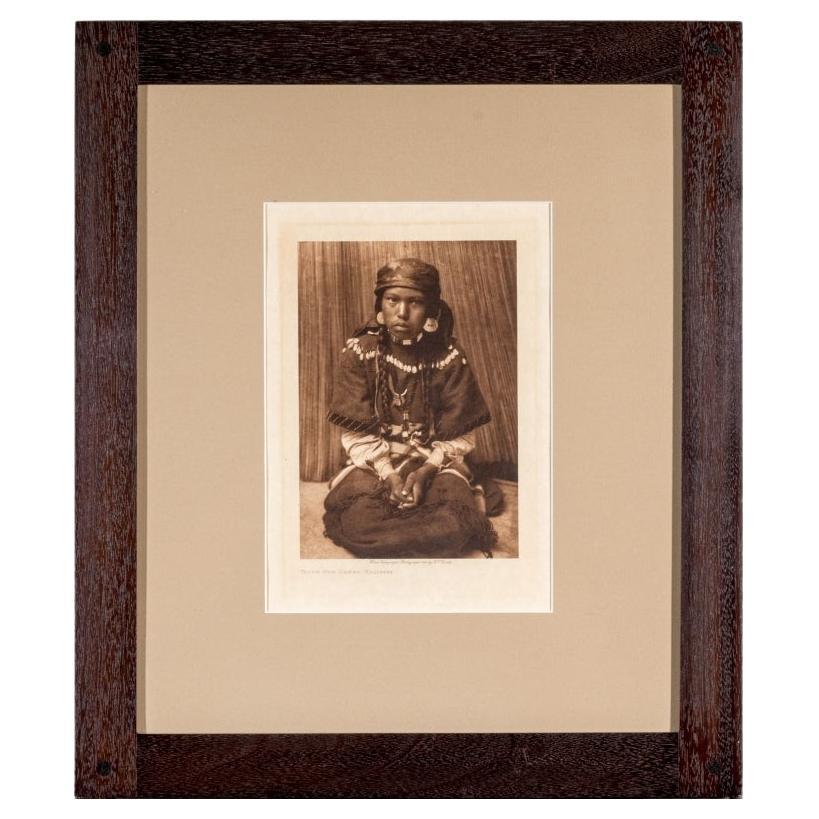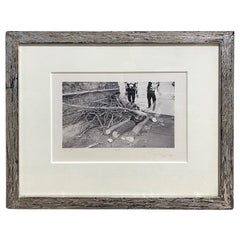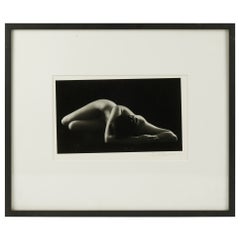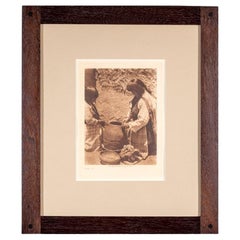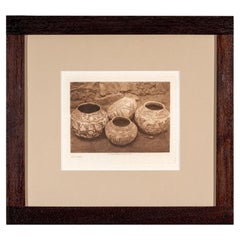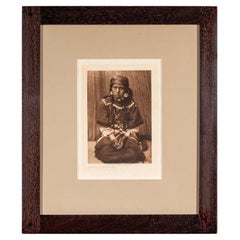Edward S. Curtis Original Signed Stamped Platinum Photograph Hopi Weaver, 1899
About the Item
- Creator:Edward S. Curtis, 1868-1952 (Artist)
- Dimensions:Height: 11.5 in (29.21 cm)Width: 13.5 in (34.29 cm)Depth: 0.8 in (2.04 cm)
- Style:Native American (Of the Period)
- Materials and Techniques:
- Place of Origin:
- Period:
- Date of Manufacture:1899
- Condition:The photograph is in very good vintage condition with light natural toning (may be sepia) else no discernable flaws. The frame has wear consistent with age and use (please see photos). Likely restorable. A beautiful, rare, and engaging work overall.
- Seller Location:Studio City, CA
- Reference Number:1stDibs: LU2254334660532
Edward S. Curtis, 1868-1952
Edward S. Curtis is arguably the most influential photographer of the American West. His work unquestionably ranks among that of the most important photographers of the 20th century.
Curtis was first and foremost; an extremely gifted and sophisticated artist whose work had the duality of being an incredible artistic creation at the same time as being a document of a people. He was uniquely able to create, out of whole cloth, a lasting vision of the American Indian that never existed before it was first seen through his photographic lens.
Edward Curtis produced images of the American Indian that convey a dignity, a universal humanity and a certain remaining majesty that transcend literally all other work ever done on the subject. In his photographs we see images that are uniquely able to stand alone in the world of photography.
Beginning in 1898 and continuing through 1928, Curtis dedicated his life to documenting the traditional lifeways and cultures of 128 American Indian tribes living west of the Mississippi River, from Alaska to the Mexican border.
Curtis was a genius of an artist possessed by a singular obsession to preserve the traditional lifeways of the American Indian.
Astonishingly, focusing all his immense talents over a staggering 30-year period, Curtis accomplished what he set out to do; he did save the traditional lifeways of these Native Peoples but at tremendous personal cost. It cost him his marriage, it cost him his health, and it cost him any possible financial stability he might ever have had.
In spite of all this, he persevered and left a body of work never to be equaled in the field of photography.
Find authentic Edward S. Curtis photography on 1stDibs.
(Biography provided by Bruce Kapson Gallery)
- ShippingRetrieving quote...Ships From: Studio City, CA
- Return PolicyA return for this item may be initiated within 7 days of delivery.
More From This Seller
View AllAntique Early 1900s American Native American Photography
Paper
Antique Early 1900s American Native American Photography
Paper
Early 2000s American Modern Photography
Wood, Paper
Vintage 1960s American Mid-Century Modern Photography
Paper
20th Century American Modern Photography
Paper
20th Century American Modern Photography
Paper
You May Also Like
Vintage 1920s American Photography
Paper
20th Century American Native American Photography
Acrylic, Wood, Paper
20th Century American Native American Photography
Acrylic, Wood, Paper
20th Century American Native American Photography
Acrylic, Wood, Paper
20th Century American Native American Photography
Papercord, Acrylic, Wood
20th Century American Native American Photography
Acrylic, Wood, Paper
